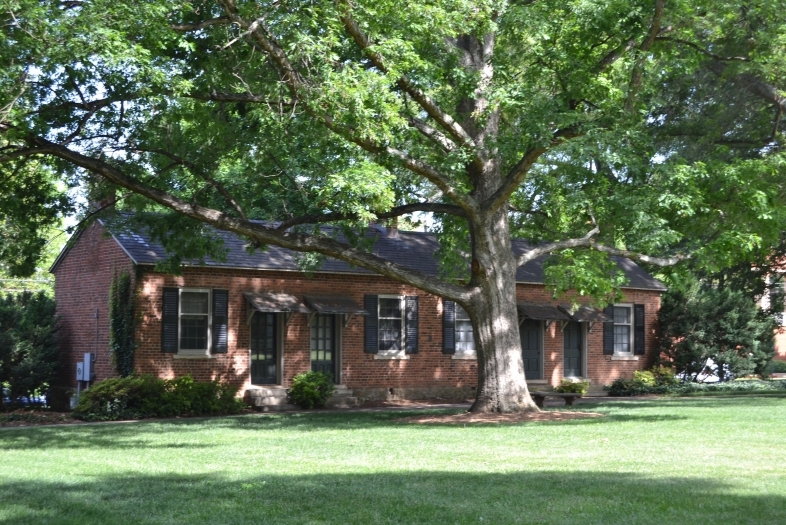
Oak Row
Oak Row is situated alongside With These Hands: A Memorial to the Enslaved and Exploited, which honors these individuals from across the centuries and includes them in the college’s history.
It is a renovated space created by the college in order to foster remembrance and education. The 2020 report from the Commission on Race and Slavery sought to uncover Davidson College’s historical relationships with slavery and racial inequality. Findings of the report and subsequent research are explored in the current Oak Row exhibition. Images throughout the exhibition highlight staff of color from across the college’s history. Some of their names and stories are known, and others are yet to be uncovered.
The individuals highlighted were part of the Davidson College community but many were excluded in significant ways: from human freedom, from the dignity of equal treatment, from fair pay and from recorded history.
The enslaved people who made the bricks in the original buildings were on loan, for a fee, from nearby farms. The impressions of their thumbs in the hardened clay represent them to this day, but their names were not recorded. Until Emancipation in 1863, enslaved people farmed the college’s land and tended to the college president and faculty. Most early trustees, presidents, and faculty owned enslaved persons.
After the Civil War, many stayed as laborers at an institution, and lived in a town, where leaders upheld Jim Crow laws and segregation. They washed the laundry, cooked meals or cleaned buildings – familiar faces in a close community. Yet they received low wages, were denied access to public services and businesses, and lived on the other side of the tracks. Well into the 20th century, they endured segregation.
Built from bricks made by enslaved laborers, Oak Row is one of the original buildings on Davidson’s campus. Oak Row and nearby Elm Row served as dormitories in 1837, with each including four rooms for 16 students. Over the years, the buildings have been used as infirmary and classroom spaces, and have housed the music and art departments and fraternities. Most recently, Oak Row was converted to a permanent exhibition space in which to share the college’s institutional history.
Davidson College seeks to add to our history by collecting and preserving the stories of those whose contributions to the campus previously were not acknowledged. Please fill out this interest form if you would like to learn more about how to provide an oral history of your or your family’s experience.